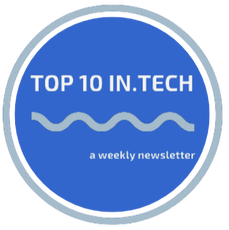|
1. SaaS METRIC OF THE WEEK: Consumption-based LTV. If you have a consumption/usage-based model, you probably have revenue that is not consistent month on month. Variable revenue is now a big thing in SaaS. Check out How to calculate LTV with variable revenue customers from the SaaS CFO (comes with a template!). An analysis of usage-based pricing from Bessemer Ventures is here to help you think about your own pricing models.
2. HYBRID PRICING: Adding onto the metric above, Kyle Poyar of OpenView has noted in this article (and updated from this one a couple of years back) a) usage-based pricing isn't merely a pricing change but an org structure one and b) UBP adoption has cooled (from 46% to 41% '22-'23) shifting towards "hybrid" pricing models that combine usage and subscription pricing, especially in the SMB side of town. 3. SALES PLAN: Adding just one more onto #1 above, when creating Sales plans, here is a great article from a16z on creating a Usage-based Sales Compensation Plan. 4. TAM: A critical question at the very early stages of startup land is, "What's the market size?" - if you don't get it right, it can create trust issues as the size potential of this startup is directly proportional to the size of that market. Having a clear understanding of Total Available Market (TAM), Serviceable Obtainable Market (SOM), and Target Market (TOM) can give all the confidence in the world to answer that question. But y'all really need to get started first with this TAM Masterclass. 5. FIRST PRINCIPLE THINKING: This phrase has been thrown around a lot in recent years, so do you want to be more like old-school Elon (the one without all the SEC/Twitter/kids dramas)? Take a read here on the concept of First Principles Thinking. In addition, here is a full guide/website. 6. RAISING: How long does it take startups to reach each venture stage? Carta's Head of Insights, Peter Walker, shared his analysis, which also clearly highlights the impact of the difficult fundraising environment we are currently in (Last year was the lowest for venture funding globally since 2018, - $285 billion according to Crunchbase data) 7. SALARY (Updated for 2024): Hey Founders, a TechCrunch article from last year recommended that founders pay themselves rather than doing it for the equity. But how much? Unfortunately, this doesn't mean you get Market Rates. Fortunately, there is a new report in town that dives deep into this question; the "Founder Compensation 2.0" report (Europe-based) aims at providing data-driven insights for setting founder pay, especially those of us from Seed to Series B, offering a clearer picture of what is considered "normal." It also comes with a Compensation Calculator! 8. ESOP (also updated for 2024): Employee Share Option Plans are a wonderful idea to incentivize and retain great staff, but under the hood, ESOPs are complex, especially with changing valuations, both positive and negative, in today's market. Check out Airtree Venture's best practices for communicating the value of ESOP to teams. This article also has a bonus financial model template (value calculator, salary package calculator, and vesting schedule). Check this cheat sheet for common ESOP terms. How much equity should you be setting aside for employees in 2024? Peter Walker again - coming through with the good data via this LinkedIn post (check the comments for good Q&A). ESOP starts with around 13% fully diluted at Pre-Seed and Seed and grows to about 20% fully diluted at unicorn valuation. 9. GROWTH HACKS: This article suggests we avoid using "growth hacking" in pitch decks; investors prefer structured GTM strategies. Focus on market understanding, a clear plan to gain market share, and mastery of chosen channels. But IRL, outside of telling VCs you don't, here are five real growth hacking strategies you can use right now. 10. CASE STUDY: Adding onto #9 above, here is how First Principle Thinking can be applied IRL - in this example, towards a Product Lead Growth business. POD OF THE WEEK: Adding onto #6 above, Chartmogul has a great panel discussion about what matters most when pitching in 2024 and what advice they have for SaaS companies looking to raise this season. Comments are closed.
|
|
